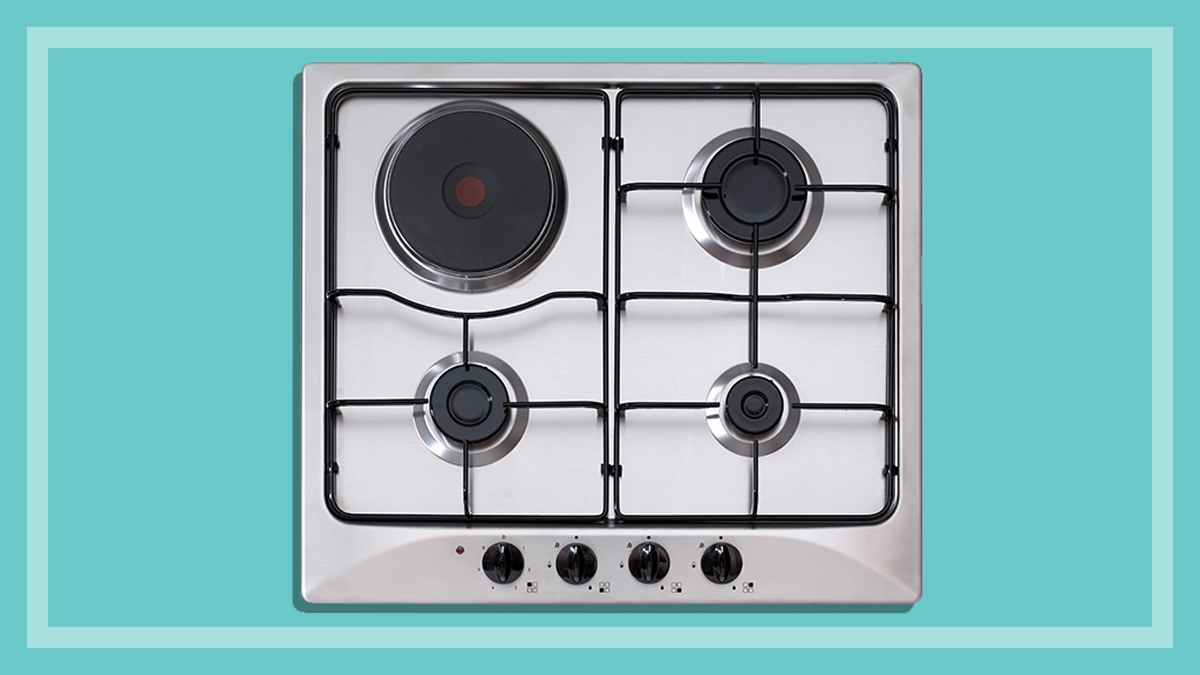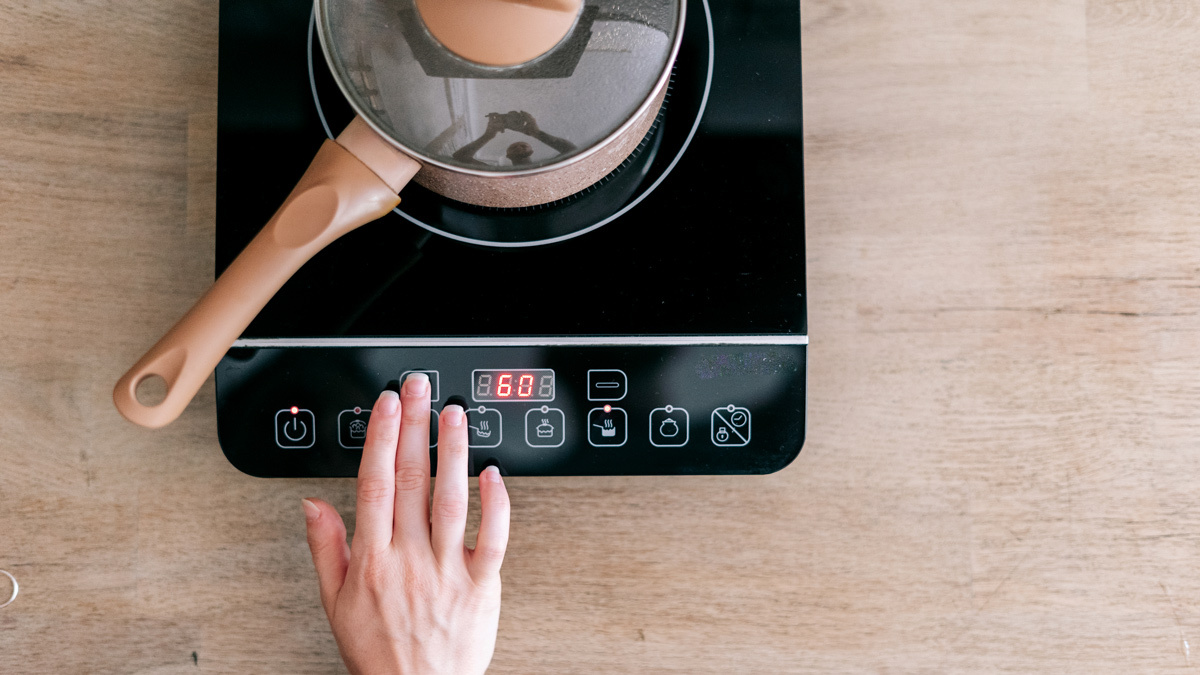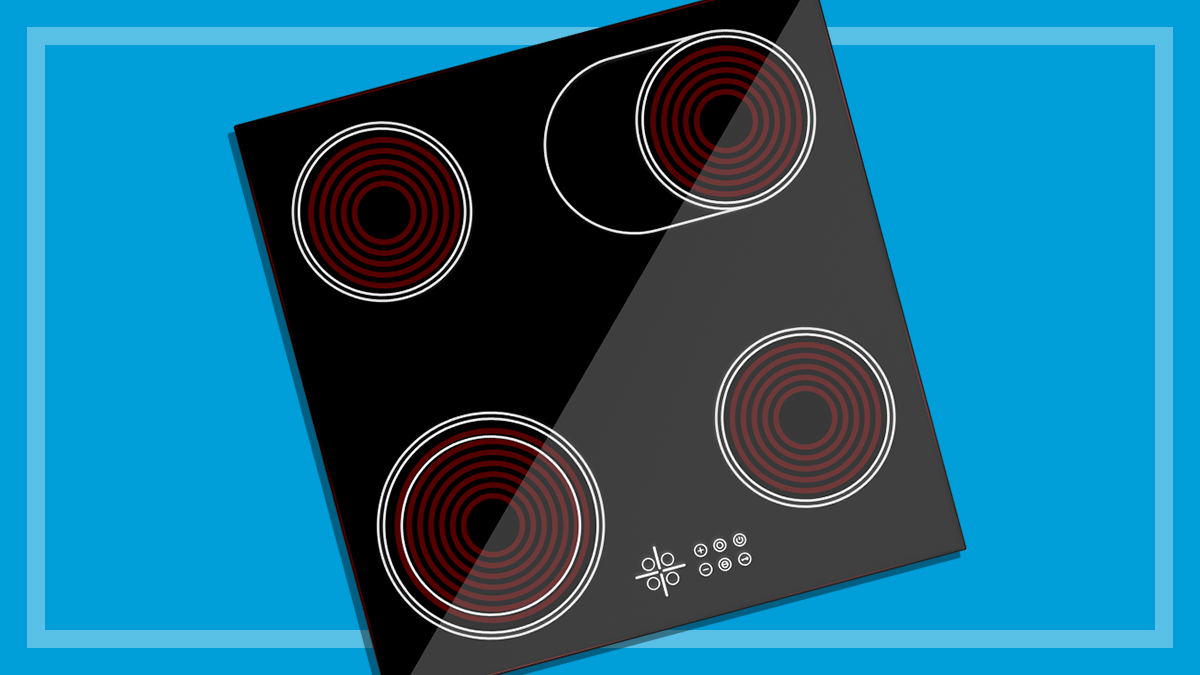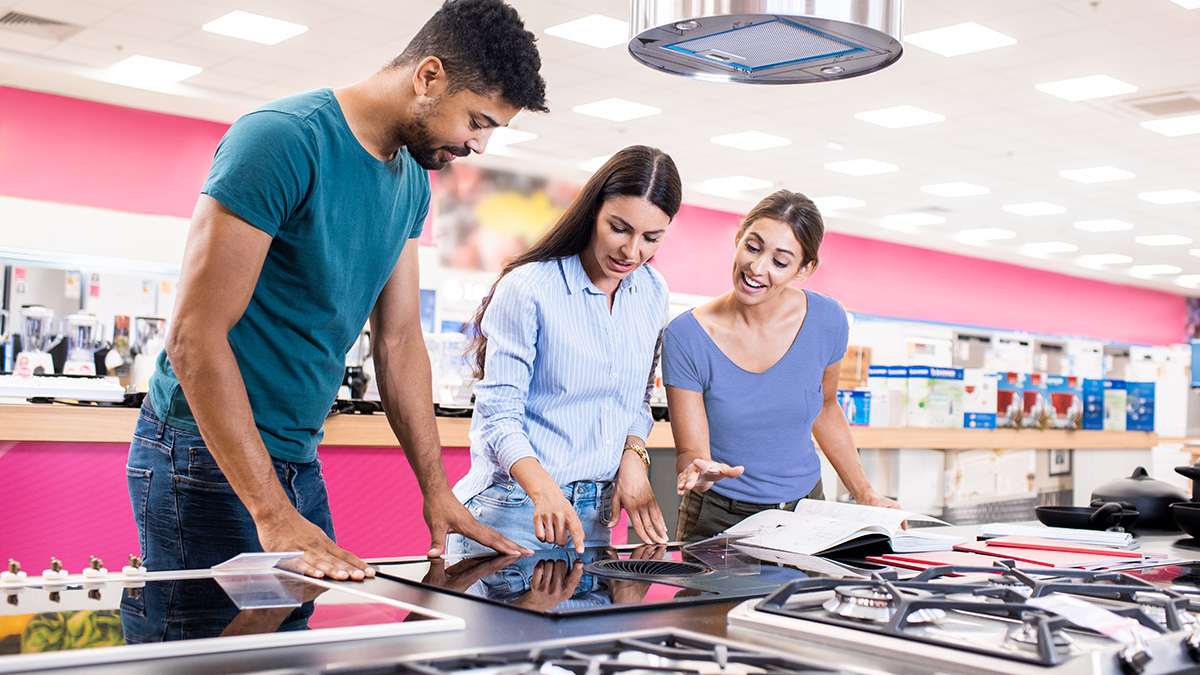Get our independent lab tests, expert reviews and honest advice.
What to know before you buy a gas cooktop
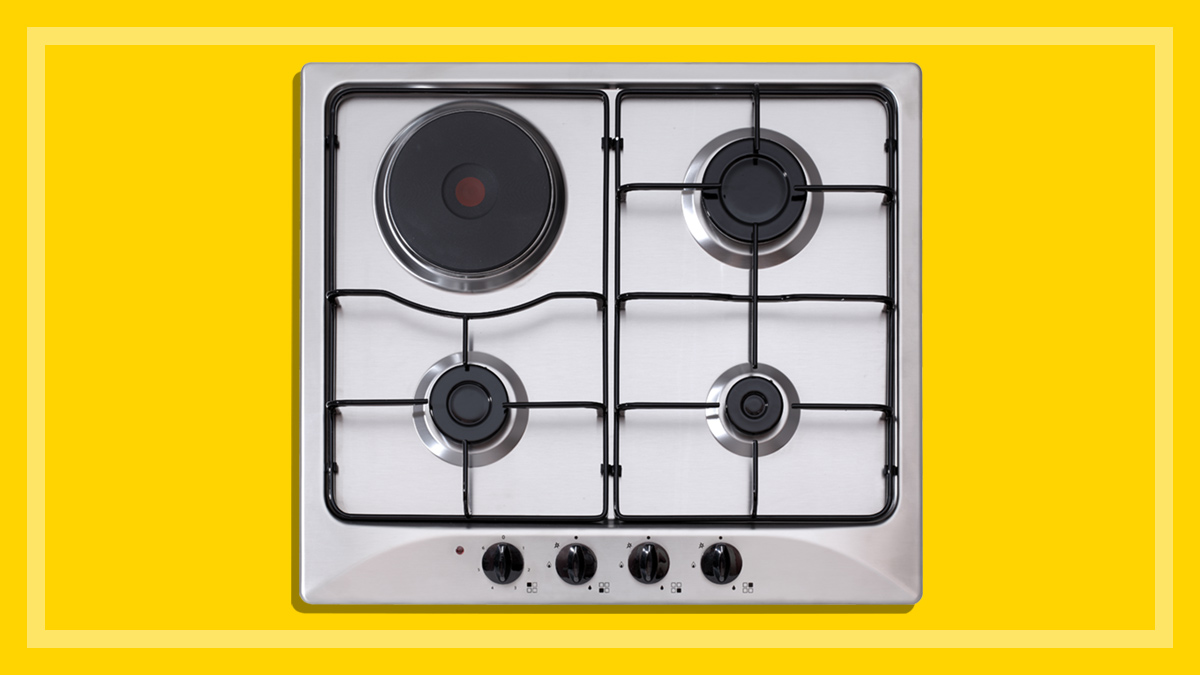
Thanks to instant heat control, a gas cooktop lets you capture all the flavours in your favourite dishes. With a variety of finishes to choose from – including enamel, glass and stainless steel – they look good, too. But you need to consider more than just cooking performance and design when it comes to buying one.
On this page:
- How do gas cooktops work?
- Do you have mains gas?
- The importance of flame failure
- Health concerns
- Size options
- What type of burners do I need?
- Layout of burners
- What to look for in a gas cooktop
- How to clean a gas cooktop
- Who can install a gas cooktop?
- Flame height adjustment during installation
- Cost
How do gas cooktops work?
Gas cooktops use an electronic ignition system that creates a spark (the clicking noise you hear) when you turn the burner on, creating the blue flame. Turning the control knob allows you to control how much gas reaches the burner. The higher you turn, the more gas released.
Do you have mains gas?
If you’re building, or thinking of changing from a ceramic to gas cooktop, the first thing to check is that mains gas is available where you live. If it isn’t, then a ceramic or induction cooktop are the other ways to go. If your heart is set on gas then many models have the option of using bottled LPG but keep in mind this is more expensive than mains gas.
The importance of flame failure
While gas cooktops are impressive for their instant heat control, some fall short in terms of safety. We don’t test or recommend any gas cooktop that doesn’t have a flame failure safety feature.
What is a flame failure device?
It’s a device which means the gas will automatically cut out or reignite if the flame goes out. This feature should be standard equipment, but unfortunately not all models are fitted with this. If the flame goes out, gas can escape silently and invisibly, building up in the room, which is why gas cooktops now require a flame failure device by law.
Flame failure safety implementation
An Australian and New Zealand standard for gas cooktops came into effect on 1 July 2017. It requires that all burners on a gas cooktop be fitted with a flame failure device. This change is an important safety initiative. Today, all new products that are manufactured and sold into the Australian market must have flame failure devices fitted to all burners.
Older gas cooktops manufactured before July 2017 without flame failure devices may continue to sold on the Australian market. It’s unlikely you’ll find any models in retail these days without flame failure devices, but it’s worth checking before you buy.
How can I check for flame failure?
This should be clearly listed in the specifications (ask the retailer if you’re not sure). The device usually consists of two small rods sticking up next to the burner (one is for the ignition and the other detects the flame). However, models that automatically re-ignite have both functions integrated into the one device so will only have one rod next to the burner.
Health concerns
Gas cooktops have been identified in several studies as a factor contributing to childhood asthma and other respiratory health problems. Gas flames release small but measurable amounts of contaminants such as nitrous dioxide and fine particles.
One study estimated that exposure to gas stove emissions is responsible for 12.3% of childhood asthma in Australia, while another concluded that children living in a home with gas cooking have a 42% increased risk of having current asthma, and a 24% increased risk of being diagnosed with asthma at some point in their life. There is also some evidence linking gas cooking to other respiratory issues in children including reduced lung function and rhinitis.
These risks can be reduced (though not entirely removed) if you have and use a ducted rangehood, which will suck up the emissions from the gas flames and the cooking, and blow them outside.
Size options
Do you want a square or rectangular model? Make sure you have the necessary space on your bench to fit the cooktop, as well as ventilation space underneath. And check the specifications of the cooktop – there are minimum distance requirements for the bottom of cupboards or the rangehood above a cooktop.
Gas cooktops come in 60, 70, 80, and 90cm widths, so choosing the best size for your kitchen will depend on bench space and rangehood size and/or how many burners you need.
When considering how many burners you need think of how well your saucepans will fit. Cooking on a 60cm gas cooktop with 4 burners will only allow 3 saucepans to fit comfortably, there can be restricted access to some burners when in use due to proximity to other burners or the size of the cookware. If you are not limited by size, have flexible bench space and you use larger cookware, consider a 5 burner 80–90cm with the wok burner positioned away from the other burners or positioned in the centre. This allows the other cookware to fit comfortably with less restriction when using other burners.
What type of burners do I need?
Wok burners have an intense rapid flow and are suited for stir-fry cooking and fast boiling as they heat up more quickly than a large burner. They’re best for stock pots, extra-large frypans and round bottom woks.
Large burners are suitable for most uses such as frying, boiling pasta and potatoes. They’re best for larger non-stick frypans or saucepans. Avoid high temperatures when cooking with non-stick cookware.
Medium burners are suitable for foods that require quick response to temperature change such as rice or simmering casseroles and soups as the ingredients need to be brought to a high temperature initially and then reduced to a very low simmer.
Simmer burners are suitable for delicate ingredients such as making sauces, melting butter and chocolate. They’re best for smaller frypans and saucepans.
Layout of burners
You need to consider the position and layout of the burners and their size in relation to the pots and pans you use.
Look for:
- burners that are spaced out so you can use multiple pots at once and don’t have to reach over one element to get to another
- a range of simmer, medium and large sized burners
- simmer burners positioned at the front so you don’t have to lean over other burners to stir a sauce
- medium burners positioned at the back – these are best for simmering foods for a long period that don’t require frequent stirring
- a wok burner – this is best positioned at the side on its own or in the centre for accessible and continuous stirring
- an oblong-shaped burner if you’d like to use a grill or hotplate for barbecuing.
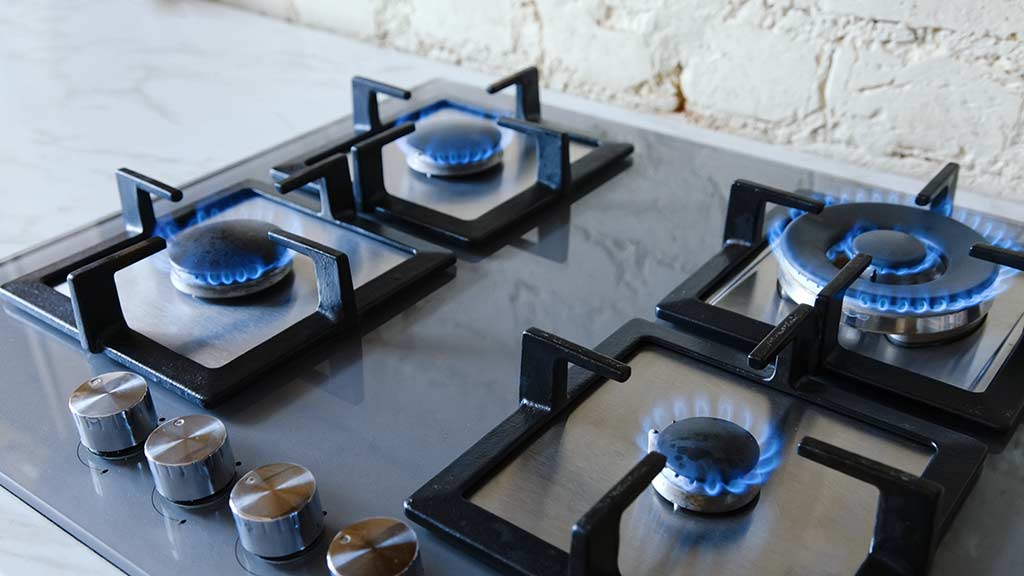
What to look for in a gas cooktop
Controls
Control knobs should be a good size – ideally with a crossbar, so they’re easy to grip, and a clear pointer. Controls shouldn’t be positioned too close to the trivets or burners.
Labels
Any labels should be etched as opposed to bonded. Bonded labels sit on the surface and can fade if you use harsh cleaners, whereas etched are in the surface – you can feel the difference.
Surface
Look for a surface that’s easy to clean with minimal dirt traps. The cooktop should be able to contain reasonable spills. Some gas cooktops have a spill catchment area and separation between burners to contain spills, whereas others (particularly those with a ceramic top) don’t.
Burners
Single piece burners and burner caps that overhang the actual burner head are easier to clean and maintain.
Trivets
Trivets or pan supports should be flat and stable on the cooktop. Those with rubber feet are less likely to move and won’t scratch the surface. Trivets without large gaps allow you to slide pans around the cooktop without lifting them. Most cooktops come with bulky, heavy cast iron trivets, but if you can find enamel ones they’re much easier to clean. Stainless steel trivets can stain easily so avoid these. Some cooktops have a trivet for each burner – you won’t be able to slide pots around these cooktops but they’re much lighter to lift and will fit into your kitchen sink with ease.
How to clean a gas cooktop
The first rule of cleaning a gas cooktop is clean up any spills as soon as possible because clogged burners can cause poor gas flow and uneven heating. Baked on residue is difficult to clean.
Cleaning a gas cooktop can be tedious with so many parts. The cast iron trivets can be heavy and awkward to clean in a domestic sink and the cooktop surface can show smudges and scratches.
If you like the look of stainless steel, choose a fingerprint-resistant coating as it’s less likely to show smudges, and makes wiping up spills a little easier. Enamel coated surfaces are much easier to clean and show no finger marks or smudges. Glass surfaces can show smudges and may need a ceramic cleaner. Warm soapy water and a microfibre cloth are all you need on most gas cooktop surfaces.
Control knobs can be removed and washed in warm soapy water. Be careful not to scrub or use harsh chemicals when cleaning surfaces or controls with printed labels as they can fade and rub off overtime.
Cleaning the cast iron trivets, enamel trivets and stainless steel trivets may require soaking if residue has been baked on. Soak trivets in a sink with hot soapy water. If your cast iron trivets have burnt-on residue, a grease-cutting cleaner and a scourer may be needed (avoid putting them in a dishwasher as they can rust). Look for trivets that have a smooth surface for easier cleaning.
Cleaning burners is very important to prevent clogging of the burner holes and uneven gas flow. Burners are usually made of aluminium so avoid cleaning them with bicarb soda and vinegar as this can discolour the metal. Soaking in warm soapy water is best, using a soft brush or a paper clip to remove food residue from the tiny holes in the burners. Cast iron burner caps can stain, but residue will burn off over time. Avoid aluminium burner base surrounds, as they’re virtually impossible to clean when residue is baked on.
Finally, dry parts well, especially the burners otherwise the gas flame can flow unevenly. Drying will also prevent the cast iron trivets from rusting.
Who can install a gas cooktop?
You’ll need to get a licensed plumber to install and connect your new cooktop.
Flame height adjustment during installation
You can’t always expect good heat control straight out of the box. We’ve found that some gas cooktops need to have their flame heights adjusted on some burners, typically the simmer and medium burners. Initially the “low” setting on these burners can produce too high a flame and in some of our low-temperature cooking tests (rice and white sauce) the result has been burned food. In these cases, we have a licensed gas plumber adjust the low setting on the affected burners to the lowest possible flame and this significantly improves their low-temperature cooking performance.
If you get a new gas cooktop, make sure the flame on the low setting in particular is adjusted to the lowest possible height, especially on the small and medium burners where you’re more likely to simmer a pot. The high setting is usually OK and probably won’t need adjustment. You may find some plumbers are unwilling to do this in case they void the warranty, but product installation instructions usually specify how to adjust the flame height, and service departments usually advise that a licensed installer or gas plumber can do this for you. If in doubt, call the brand’s customer service centre first. Usually there’ll be no problem with having the flame height adjusted by a professional, as long as they follow the supplied instructions.
Cost
The gas cooktops we’ve tested range in price from $269 – $3799.

